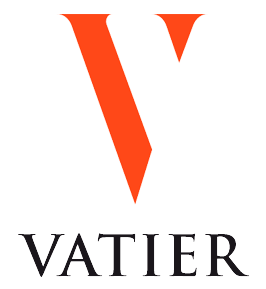The recent Summit for Action on Artificial Intelligence, held on February 10 and 11, 2025, received particularly close attention for its promises of massive investment and innovation.
The French Ministry of Health and Access to Care has officially published an inventory of artificial intelligence in healthcare in France, with the aim of “putting artificial intelligence at the service of healthcare“.
Following the summit, Yannick Neuder, French Minister for Health and Access to Care, announced that almost 500,000 healthcare professionals would be trained in artificial intelligence as from next September: funding of €119 million per year over five years will be dedicated to training healthcare professionals in artificial intelligence. The announcement of these measures testifies to the public authorities’ determination to focus on the development of artificial intelligence to accelerate the digital transformation of the healthcare sector.
Nevertheless, can we be satisfied with the current conditions for the development of telehealth in France?
The possibility of using teleconsultation procedures was introduced 15 years ago in France (decree no. 2010-1229 of October 19, 2010 on telemedicine, in application of the 2009 HPST law); however, we had to wait until 2018 to put an end to the experimental nature of telemedicine and make teleconsultation part of common law of French Health Insurance (2018 Social Security Financing Law): only since September 15, 2018, have teleconsultation procedures been open to all patients and reimbursed by the French Health Insurance!
Beyond the major announcements of the Summit for Action on Artificial Intelligence, the Telehealth & Digital HealthcareThink-Tank – of which our partner, Delphine Jaafar, in charge of the firm’s Health team, is a member – published at the end of 2024, one year after its creation, its first recommendations for concrete progress in digital healthcare in France.
“The founders of the Think-Tank have sought to raise awareness among citizens and patients, all digital health professionals, all the healthcare professions concerned, as well as health authorities and other healthcare bodies, of the innovations and successes, primarily organizational and in terms of use, involving telehealth and digital health in the field of healthcare pathways combining remote and face-to-face care at the level of a healthcare territory, and bringing about social and economic innovations in their wake” (Dr. Pierre Simon, Co-founder of the Telehealth & Digital HealthcareThink-Tank).
The 10 recommendations of the Telehealth & Digital Healthcare Think-Tank:
THE HYBRID FITNESS TRAIL.
1st recommendation
Alternating remote and face-to-face care pathways characterize the hybrid medicine of the 21st century. It is through the alliance of clinical care and technology that the territorial organization of care will guarantee better performance in the management of patients by a care team.
2nd recommendation
This hybrid medicine must be based on innovative professional organizations founded on the skills of the various professionals making up primary and secondary care teams within the multiple structures of the health and medico-social sectors for better overall care and management of care pathways based on the coordination of care teams:
1. Self-employed healthcare professionals in isolated or coordinated practice: multidisciplinary health centres (MSP), territorial professional health communities (CPTS), etc.
2 Public and private healthcare facilities
3. Local prevention, diagnosis and care structures and establishments: home nursing services (SSIAD), health centers, teleconsultation companies, mental health and addiction structures, maternal and child protection centers (PMI), sexual health centers, etc.
4. Medico-social establishments: establishments for dependent elderly people (EHPAD), establishments for disabled people, etc.
5. Other organizations: school and university medicine, occupational medicine, etc.
3rd recommendation
This kind of hybrid medicine can only be set up if there is organized cooperation between the various healthcare professionals in a given health region. The evaluation of professional organizations for remote care must show, through randomized controlled studies, that they are non-inferior to face-to-face care.
The HAS recommends involving patients in these assessments by integrating the organizational experience as lived by the patient, during distanced care (PREMs for Patient-Reported Experience Measures), as well as the therapeutic results obtained by the new distanced organizations (PROMs for Patient-Reported Outcome Measures).
4th recommendation
Remote care, and in particular the various forms of teleconsultation, need to adapt to the patient’s hybrid healthcare pathway if they are to succeed in establishing themselves as an essential means of ensuring safe, high-quality continuity of care, particularly for patients with chronic illnesses.
5th recommendation
In this respect, the practice of remote care, with all its forms of telehealth (teleconsultation, tele-expertise, remote surveillance, telecare), requires the use of My Health Space (MES), in particular the Shared Medical File (DMP), to maintain its quality. The DMP enables the patient’s questioning to be completed securely, and records to be kept of procedures and prescriptions. The availability of a file shared by the professionals involved is fundamental, and access to it by patients must be made easier for doctors and other healthcare professionals.
TELECONSULTATION, ITS FIELD OF POSSIBILITIES.
6th recommendation
Remote care is possible with the consent of patients, who must be informed of the benefits and risks of this new organization made possible by telehealth practices. As a result, teleconsultation, in its various forms, is an essential modality for carrying out remote care, alternating with the face-to-face consultation that characterizes face-to-face care.
7th recommendation
Teleconsultation is a major component of the hybrid care pathway, and its use can neither be exclusive nor limited by a percentage imposed on the activity of medical professionals. Only the aforementioned professionals, in view of the needs of patients suffering from chronic illnesses, should be able to determine the relevance and frequency of teleconsultation, in order to guarantee the efficiency of the care pathway and the proper coordination of care.
8th recommendation
The scope of teleconsultation possibilities covers several situations in a healthcare pathway:
1. Teleconsultation at the initiative of the attending physician, as well as that of physicians from other specialties cooperating in the follow-up of a patient, when deemed appropriate, alternating with face-to-face consultations.
2. Teleconsultation accompanied by a healthcare professional (nurse, pharmacist, other authorized professional), who assists the patient during the remote clinical examination requested by the doctor. A preliminary tele-expertise, initiated by the healthcare professional with the doctor, notably on the basis of the nurse’s clinical reasoning, can help to clarify the appropriateness and relevance of teleconsultation.
3. Patient-initiated or citizen-initiated teleconsultations are those carried out on teleconsultation platforms. The doctor does not know the patient. To ensure patient safety and that the patient’s file is taken into account, these teleconsultations should only take place if the requesting party accepts that the doctor or professional requested in the first instance can access his or her DMP. This is to enable professionals, who do not know the patient, to guide and reinforce their interpretation of an in-depth interrogation. The HAS recommendations and the ethical guidelines published by the DNS must be respected. This type of unscheduled teleconsultation should be promoted as part of a coordinated and efficient territorial telemedicine organization, integrated into the Care Access Service.
4. Teleconsultation assisted by a healthcare professional in an emergency situation relies on a mobile telemedicine team that travels to the patient’s home at the request of the SAMU Centre 15 or healthcare access services (SAS). This is a situation in which access to the DMP, even in “glass breaker” mode, is of great interest, particularly with regard to the patient’s history and current treatments.
5. Deploying teleconsultation within the SAMU Centre 15s and healthcare access services (SAS), which have now been rolled out nationwide, would represent a major step forward in the management of medical emergencies. Teleconsultation would enable private practitioners to carry out a more accurate initial assessment using video. They could directly observe the patient’s condition, identify visible clinical signs, and better understand the situation. Teleconsultation would improve the accuracy of diagnosis and the relevance of the response compared with the current telephone assessment.
6. Scheduled teleconsultation with a geriatric care team offers residents of medical-social establishments, who are the oldest in the French population and the most affected by the chronic diseases of aging, access to primary and secondary care. This reduces the need for hospitalization, which could prove unnecessary or disruptive for patients outside their usual living environment. A number of innovative professional organizations, such as territorial mobile telemedicine teams, offer this kind of programmed service. In life-threatening emergencies, the SAMU Centre 15 hospital regulator uses ambulance tele-regulation and patient visio-regulation, the latter being carried out by a team of paramedics (ARM, IDE) in close collaboration with the CODIS. More broadly, teleconsultation offers similar benefits to residents of other medico-social establishments for people with disabilities, and those hospitalized at home or receiving home care.
7. Teleconsultation with specialist doctors is part of the coordinated care pathway. Outside the coordinated care pathway, teleconsultation is possible to support specialties that are difficult to access, such as ophthalmology, psychiatry, gynecology, obstetrics, dermatology and others.
8. Teleconsultation in primary prevention will need to be developed over the next few years.
TRAINING FOR HEALTHCARE PROFESSIONALS
9th recommendation
This field of possibilities can be illustrated by one example among others, that of the patient-professional relationship in a chronic disease care pathway. Hybrid practice opens up the prospect of a shift from face-to-face appointments, which today are based on pre-established frequencies with GPs, specialists and carers, to an alternation of remote and face-to-face appointments depending on the evolution of the patient’s clinical condition and needs, based on a personalized health plan (PPS), which remote care and self-management will support.
It is recommended that all healthcare professionals wishing to engage in telehealth activities, and in particular teleconsultations, should receive clinical and practical training. This will eventually be part of initial training at universities and health institutes. It is imperative to include hybrid health pathways in the curriculum of specialty courses, to bring them into line with other types of practice, and to standardize them where they are currently the exception rather than the rule.
From now on, for practicing professionals, this means setting up CPD training based on EPP using behavioral guidelines, such as the HAS recommendations, as well as guidelines from the scientific literature for both healthcare professionals and patients. Major attention must be paid to this issue by both liberal and hospital organizations, as part of the periodic certification of the skills of all healthcare professionals.
10th recommendation
Acculturation of healthcare professionals to telehealth and digital health remains a major concern. The training framework for remote medicine is currently centered on digital technology, and would benefit from more clinical and semiological training, so that all medical and paramedical practitioners acquire a better understanding of remote medicine and its constraints. Remote care also requires an understanding of the legal issues in terms of professional liability, as well as the need to learn how to create a bond of trust and empathy via a medium.


